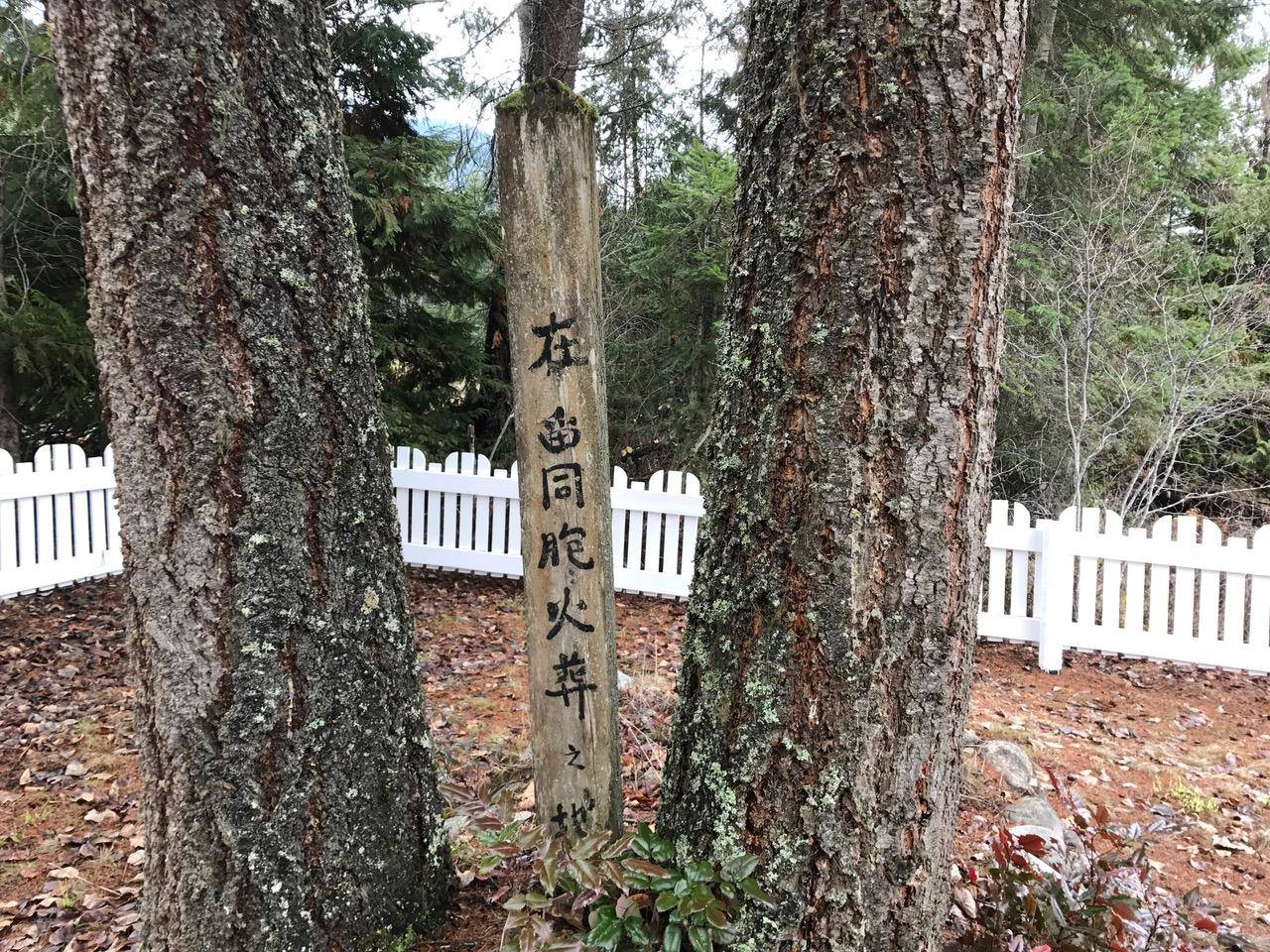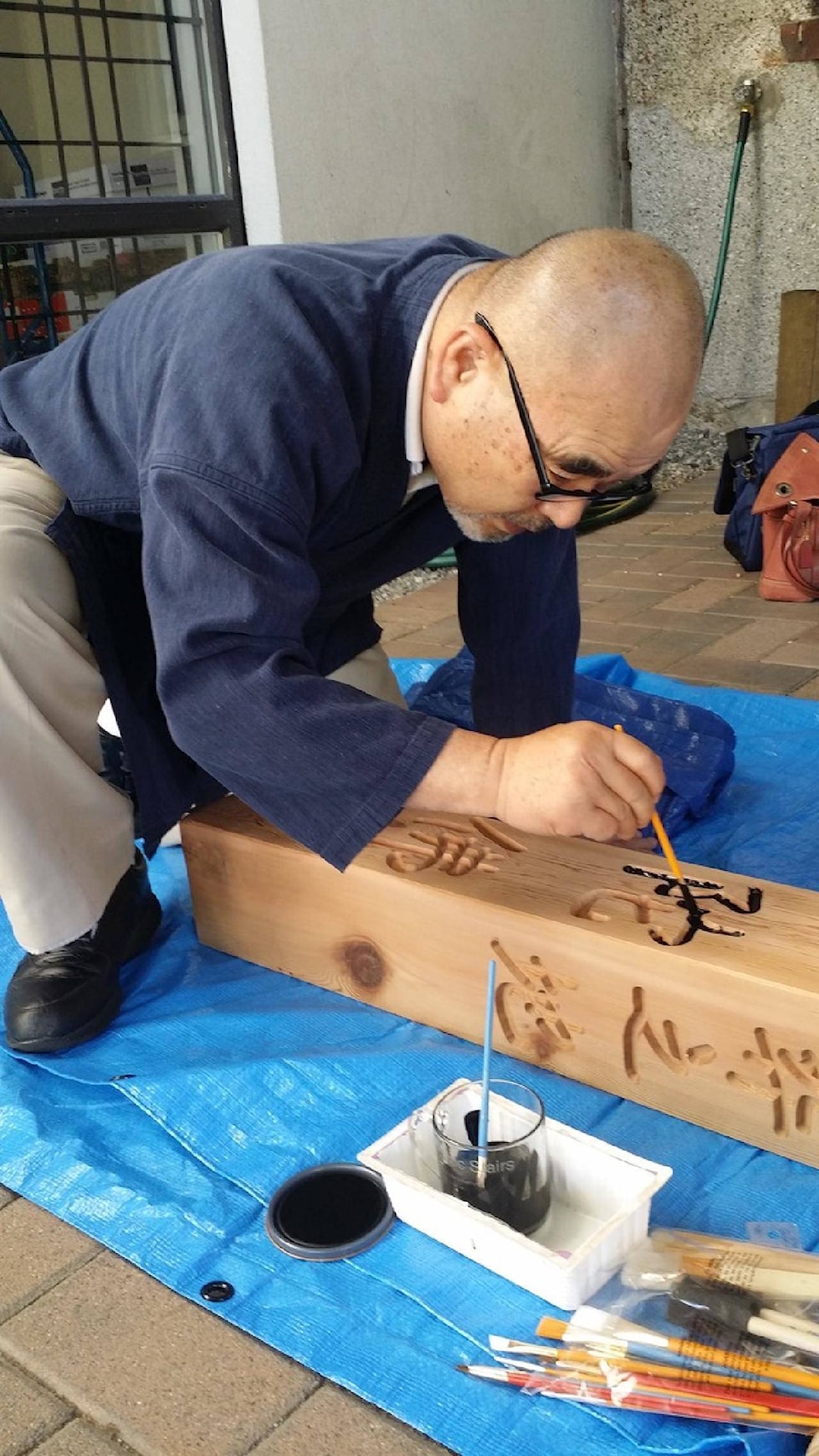On Sunday, July 28, a Buddhist minister will bless a new monument commemorating Japanese Canadians cremated at Slocan during the internment era.
The cedar post replaces a similar monument that has been in place at the east end of village’s cemetery since 1986. The original memorial on the site was created by the Slocan Buddhist Mission Society 75 years ago.
Rev. Yasuhiro Miyakawa of the Kelowna Buddhist Temple will conduct the blessing before travelling to New Denver to take part in the annual Obon service. The public is invited to attend the short ceremony at 11:30 a.m. in the cemetery at 704 Arlington Road, across from Mountain Valley Station.
“The refurbishment of the monument has been a desire of the Slocan Valley Historical Society for several years,” says secretary Greg Nesteroff. “We received numerous donations from members of the Japanese Canadian community to help us complete the project.”
The previous monument consisted of a picket fence surrounding a rock slab with two trees growing out of it and a wooden post between them with Japanese inscriptions on all four sides. However, by 2015, the fence was rotting and two sides of the monument were illegible.
Thanks to funding from the Columbia Basin Trust community initiatives program, the fence has been replaced and a discreet interpretive pedestal added, explaining the memorial’s significance.
The new post was created in partnership with the Japanese Canadian Legacy Committee, which last year erected a series of roadside signs commemorating the internment in the West Kootenay/Boundary, including one at Slocan.
“We are so grateful to the Slocan Valley Historical Society for restoring the Japanese Canadian section of the cemetery to honour the memories of those who passed away in Slocan during the internment,” says Laura Saimoto, the Japanese Canadian Legacy committee’s chair.
“Close to 10,000 out of the 22,000 Japanese Canadians were interned in the Kootenay region. We hope that projects such as these serve to educate and commemorate this dark chapter in Canadian history.”
A sawmill in Surrey donated a western red cedar post, Hinterland Design offered discounted woodwork, and Rev. Orai Fujikawa, a retired Shin Buddhist minister, provided Japanese calligraphy, which was engraved into the wood and then repainted and varnished to withstand the elements.
The inscription, translated, reads: “Slocan Buddhist Fellowship/Place of cremation of our fellow countrymen/I take refuge in Amida Buddha.”
The New Canadian, a Japanese-Canadian newspaper, explained in its Sept. 2, 1944 edition: “Plans have been made by the Slocan Buddhist Mission Society to erect a memorial monument (seirei to) in commemoration of the deceased who were cremated at the Slocan cemetery before the New Denver Crematorium was completed. Permission has been granted to erect this monument and work is expected to begin in the near future.”
At least nine people — six men, a woman, a child and an infant — were cremated in Slocan before the New Denver crematorium was established in April 1943. Seven more are likely but unconfirmed. The first was Takeo Kinoshita, 9, who drowned in Slocan Lake on July 21, 1942 while swimming with friends.
The monument was refurbished in 1969 and again in 1986, when the previous post was removed and replicated with the current one.

